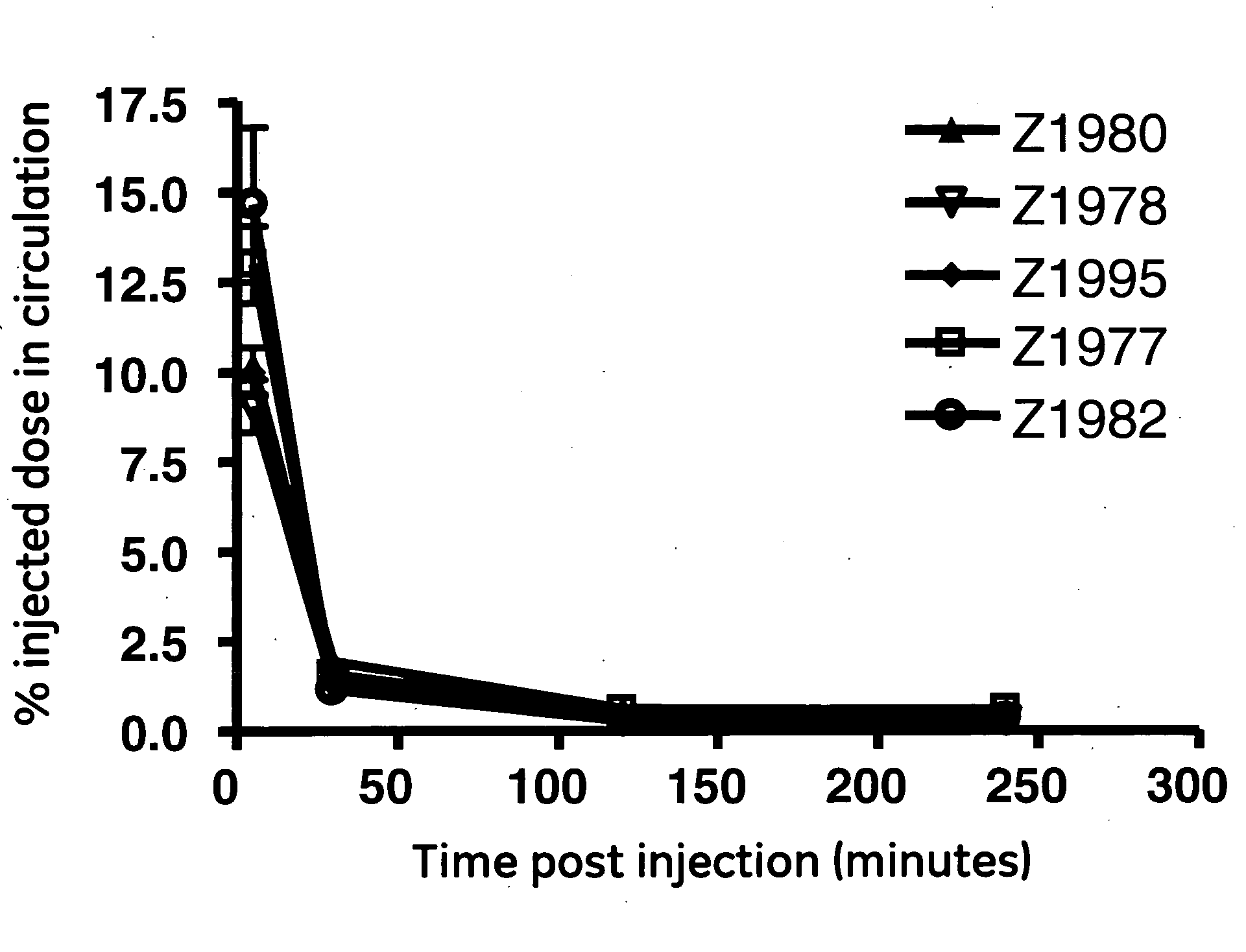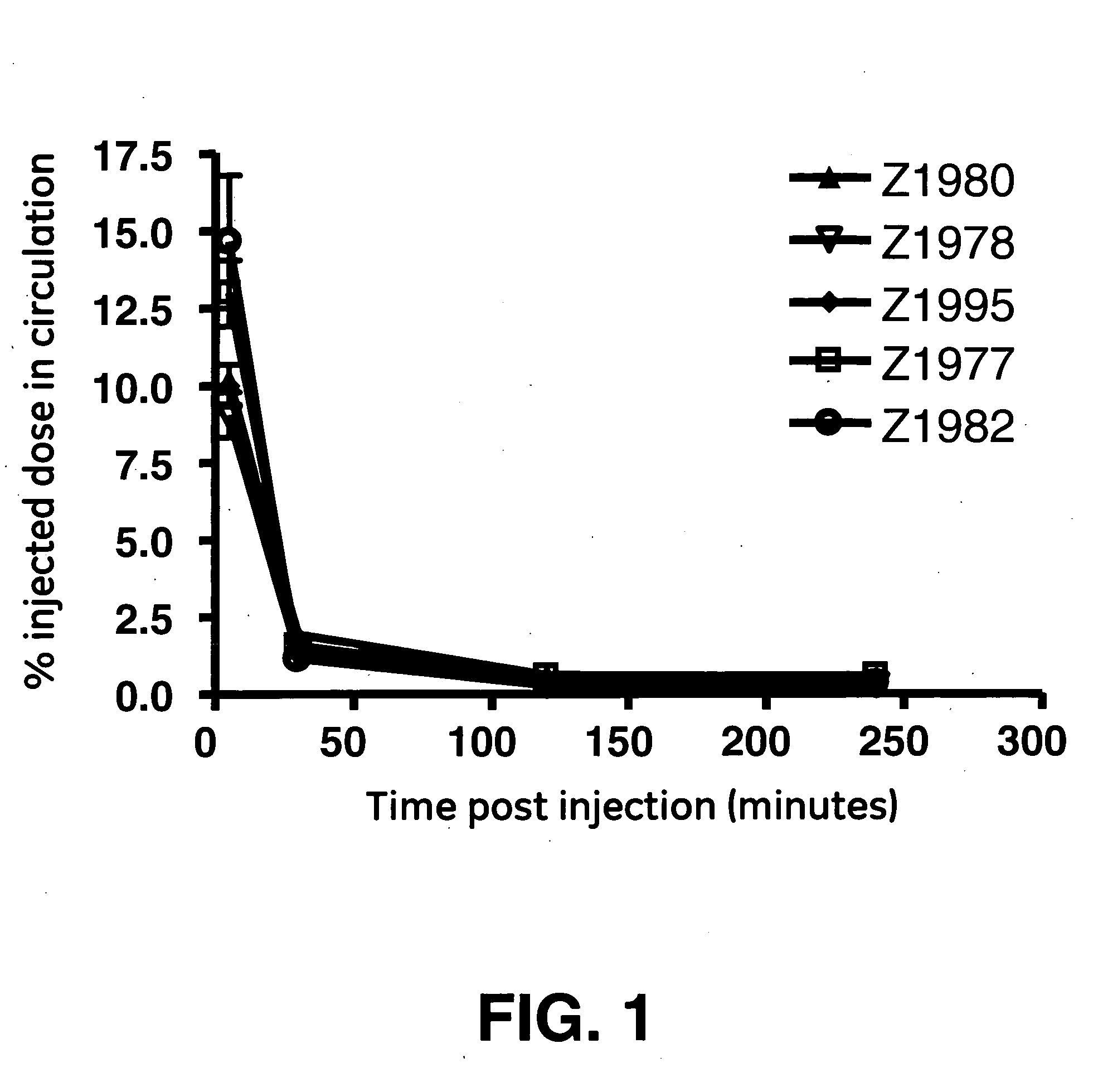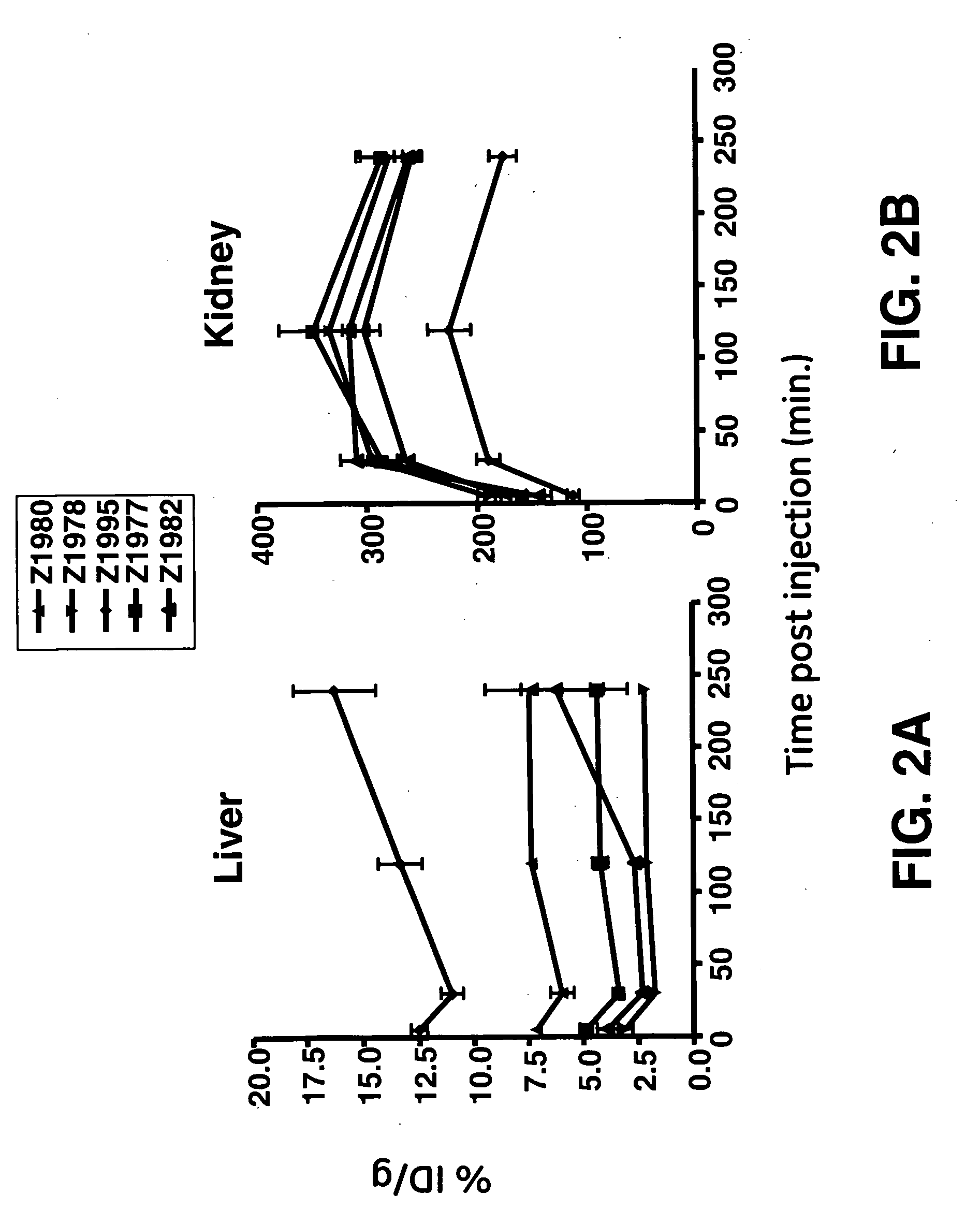Biokinetics of fast-clearing polypeptides
a polypeptide and biokinetic technology, applied in the field of polypeptides, can solve the problems of disfavored high molecular weight binders such as antibodies, body in a way that interferes with desired applications, unacceptable radiation dose to the kidneys, etc., and achieve the effect of reducing liver uptak
- Summary
- Abstract
- Description
- Claims
- Application Information
AI Technical Summary
Benefits of technology
Problems solved by technology
Method used
Image
Examples
embodiments
[0046]Provided herein are methods for tuning biokinetics of a protein sequence by altering the isoelectric point, to the increase or decrease in vivo liver and / or kidney metabolism. Also provided are polypeptides that have been altered using the present methods to demonstrate tuned biokinetics. Further provided are in vivo imaging methods (e.g., preclinical imaging or diagnostic imaging using the polypeptides provided herein.
[0047]In general, the methods provided herein enable one of ordinary skill in the art to tuning the biokinetics of a polypeptide by altering the isoelectric point of the polypeptide. Methods available for substitution of amino acids include mutagenesis of the cDNA encoding the described polypeptide by a number of methods known to those skilled in the art, including random mutagenesis, site-directed mutagenesis, and mutagenesis using error prone PCR. One method to introduce random substitutions into the binding interface positions is the use of DNA containing deg...
example 1
A Panel of Five Monomeric Affibodies
[0072]The goal of this study was to engineer an affibody with the low liver uptake. Five monomeric affibodies with a wide range of isoelectric points were chosen for this study. The range of isoelectric points, calculated as described above, was between 6.5 and 10.0. The affibodies are designated with their development codes, which are “Z1977”, “Z1978”, “Z1980”, “Z1982”, and “Z1995”.
[0073]The affibodies were labeled via their 6-his tags (as described above). Radiochemical purity after purification was in excess of 99% for all five affibodies.
[0074]Biodistribution was carried out as described above. The five affibodies were observed to have similar blood clearance profiles (FIG. 1). The blood data was subjected to a least squares fit of a monoexponential decay curve in order to determine serum half-life. The resulting curves were integrated to generate area-under-curve (AUC) values. These data and analyses show that the overall in vivo behavior of ...
example 2
A Panel of Dimeric Affibodies
[0081]The goal of this study was to apply the invention to multivalent affibodies in order to determine if their in vivo behavior may be manipulated in the same manner as the monovalent affibodies. Multivalent affibodies will have advantages in certain clinical situations and the ability to control their clearance would be valuable.
[0082]Two bivalent affibodies, each comprising a single polypeptide chain made up of two identical monovalent affibody sequences with a small intervening linker, were selected for this study. They are referred to by their development names “zTNF” and “zHer2”. They were selected from the available dimeric affibodies on the basis of their disparate isoelectric points—9.0 for zHer2 and 5.1 for zTNF.
[0083]Both affibodies were conjugated to the hynic chelator via terminal cysteine amino acid residues using maleimide chemistry as discussed above. Conjugation was confirmed by mass spectrometry, and the proteins were intact as evaluat...
PUM
| Property | Measurement | Unit |
|---|---|---|
| wavelengths | aaaaa | aaaaa |
| wavelengths | aaaaa | aaaaa |
| temperature | aaaaa | aaaaa |
Abstract
Description
Claims
Application Information
 Login to View More
Login to View More - R&D
- Intellectual Property
- Life Sciences
- Materials
- Tech Scout
- Unparalleled Data Quality
- Higher Quality Content
- 60% Fewer Hallucinations
Browse by: Latest US Patents, China's latest patents, Technical Efficacy Thesaurus, Application Domain, Technology Topic, Popular Technical Reports.
© 2025 PatSnap. All rights reserved.Legal|Privacy policy|Modern Slavery Act Transparency Statement|Sitemap|About US| Contact US: help@patsnap.com



